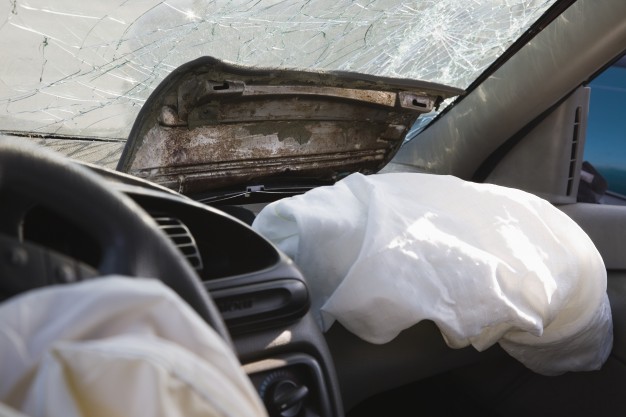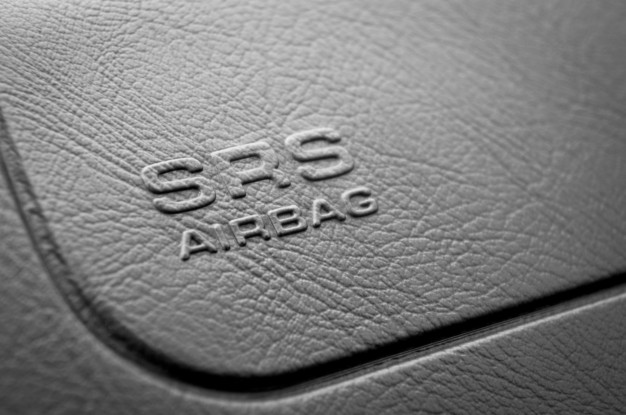
The automotive world and beyond is buzzing about the massive airbag recall covering many millions of vehicles in the U.S. from nearly two dozen brands. Here’s what you need to know about the problem; which vehicles may have the defective, shrapnel-shooting inflator parts from Japanese supplier Takata; and what to do if your vehicle is one of them.
* SCROLL TO BOTTOM FOR FULL LIST OF AFFECTED VEHICLES *
The issue involves defective inflator and propellent devices that may deploy improperly in the event of a crash, shooting metal fragments into vehicle occupants. More than 7 million vehicles are potentially affected in the United States.
Initially, only six makes were involved when Takata announced the fault in April 2013, but a Toyota recall in June this year—along with new admissions from Takata that it had little clue as to which cars used its defective inflators, or even what the root cause was—prompted more automakers to issue identical recalls. In July, NHTSA forced additional regional recalls in high-humidity areas including Florida, Hawaii, and the U.S. Virgin Islands to gather removed parts and send them to Takata for review.
Another major recall issued on October 20 expanded the affected vehicles across several brands. For its part, Toyota said it would begin to replace defective passenger-side inflators starting October 25; if parts are unavailable, however, it has advised its dealers to disable the airbags and affix “Do Not Sit Here” messages to the dashboard.

While Toyota says there have been no related injuries or deaths involving its vehicles, a New York Times report in September found a total of at least 139 reported injuries across all automakers. In particular, there have been at least two deaths and 30 injuries in Honda vehicles. According to the Times, Honda and Takata allegedly have known about the faulty inflators since 2004 but failed to notify NHTSA in previous recall filings (which began in 2008) that the affected airbags had actually ruptured or were linked to injuries and deaths.
Takata first said that propellant chemicals were mishandled and improperly stored during assembly, which supposedly caused the metal airbag inflators to burst open due to excessive pressure inside. In July, the company blamed humid weather and spurred additional recalls.
According to documents reviewed by Reuters, Takata says that rust, bad welds, and even chewing gum dropped into at least one inflator are also at fault. The same documents show that in 2002, Takata’s plant in Mexico allowed a defect rate that was “six to eight times above” acceptable limits, or roughly 60 to 80 defective parts for every 1 million airbag inflators shipped. The company’s study has yet to reach a final conclusion and report the findings to NHTSA.
UPDATE 11/7: The New York Times has published a report suggesting that Takata knew about the airbag issues in 2004, conducting secret tests off work hours to verify the problem. The results confirmed major issues with the inflators, and engineers quickly began researching a solution. But instead of notifying federal safety regulators and moving forward with fixes, Takata executives ordered its engineers to destroy the data and dispose of the physical evidence. This occurred a full four years before Takata publicly acknowledged the problem. Needless to say, the supplier has a lot of explaining to do. Read more about this latest development on this C/D page.
AFFECTED VEHICLES (total number if known in parentheses):
Acura: 2002–2003 CL and TL; 2003–2006 MDX; 2005 RL
BMW (627,615): 2000–2005 3-series sedan and wagon; 2000–2006 3-series coupe and convertible; 2001–2006 M3 coupe and convertible
Chrysler (371,309, including Dodge): 2005–2008 Chrysler 300; 2007–2008 Aspen
Dodge/Ram (371,309, including Chrysler): 2003–2008 Dodge Ram 1500; 2005–2008 Ram 2500, Dakota, and Durango; 2006–2008 Ram 3500 and 4500; 2008 Ram 5500
Ford (58,669): 2004 Ranger; 2005–2006 GT; 2005–2007 Mustang
Honda (5,051,364, including Acura): 2001–2007 Accord; 2001–2005 Civic; 2002–2006 CR-V; 2002–2004 Odyssey; 2003–2011 Element; 2003–2007 Pilot; 2006 Ridgeline
Infiniti: 2001–2004 Infiniti I30/I35; 2002–2003 Infiniti QX4; 2003–2005 Infiniti FX35/FX45
Lexus: 2002–2005 SC430
Mazda (64,872): 2003–2007 Mazda 6; 2006–2007 Mazdaspeed 6; 2004–2008 Mazda RX-8; 2004–2005 MPV; 2004 B-series
Mitsubishi (11,985): 2004–2005 Lancer; 2006–2007 Raider
Nissan (694,626, including Infiniti): 2001–2003 Maxima; 2001–2004 Pathfinder; 2002–2004 Nissan Sentra
Pontiac: 2003–2005 Vibe
Saab: 2005 9-2X
Subaru (17,516): 2003–2005 Baja, Legacy, Outback; 2004–2005 Impreza, Impreza WRX, Impreza WRX STI
Toyota (877,000, including Lexus and Pontiac Vibe): 2002–2005 Toyota Corolla and Sequoia; 2003–2005 Matrix, Tundra
We will update this list as soon as new information is available, but you can access NHTSA’s own running tally of affected vehicles here. For further information about your specific vehicle, go to the manufacturer’s consumer website or use NHTSA’s VIN-lookup tool.
- 423,000 Lexus Models Recalled for Fire Risk Due to Leaky Fuel Gaskets
- Recalls Explained: How the Government Forces Automakers to Fix Things
- Honda and Takata Allegedly Knew About Airbag Deaths for Years
This story was originally published on October 21, 2014. It has subsequently been updated to reflect the latest findings and official list of affected vehicles.




